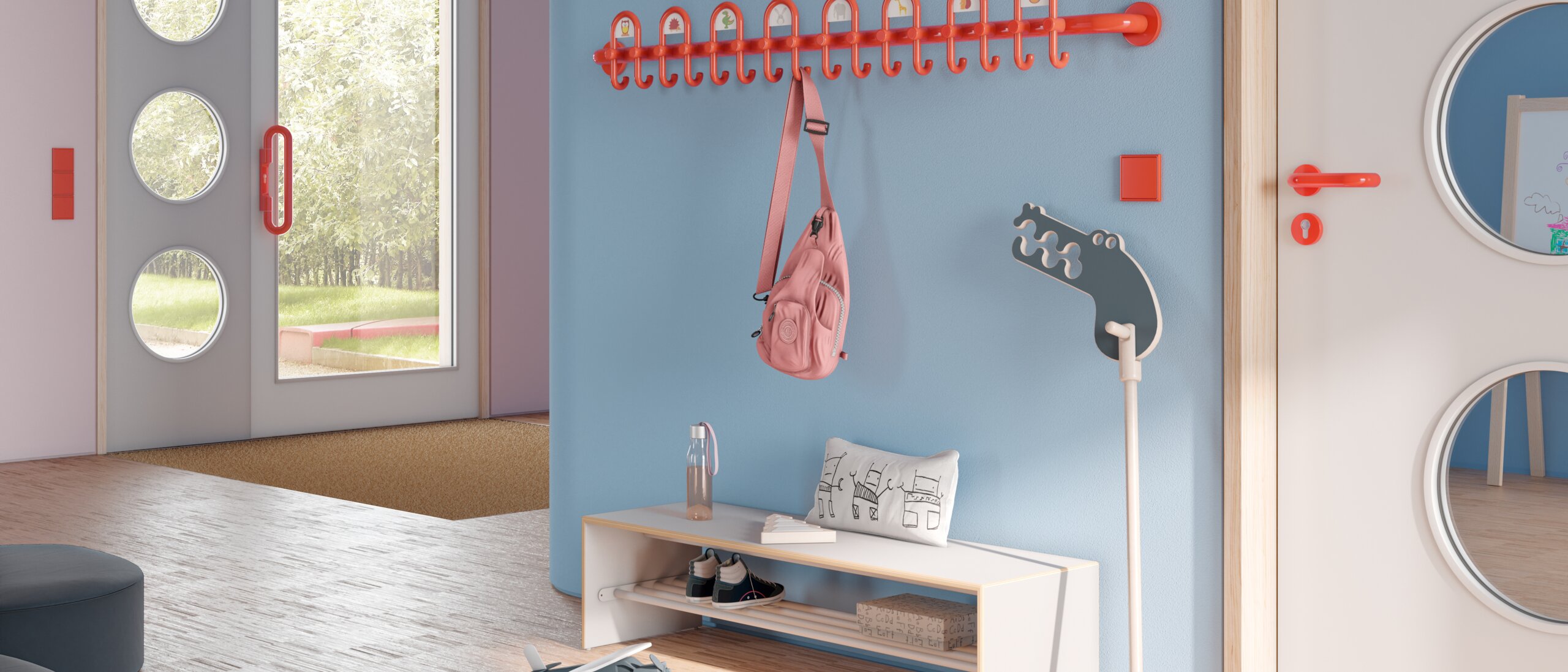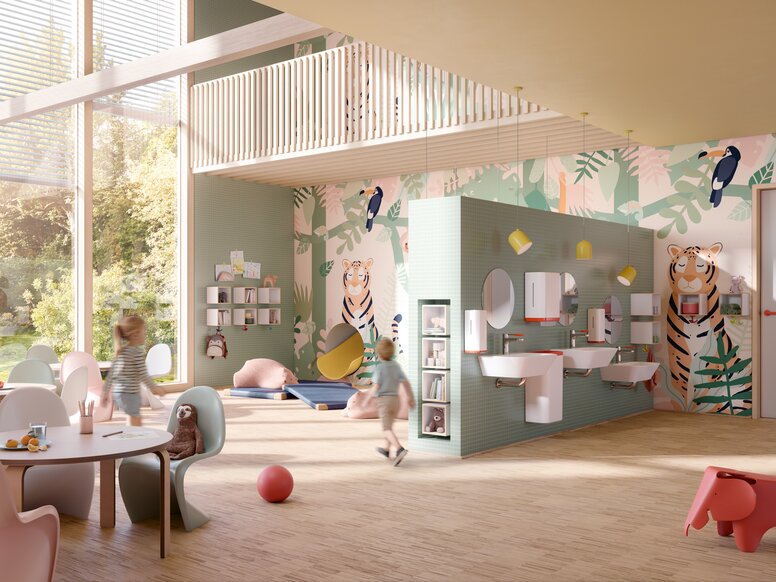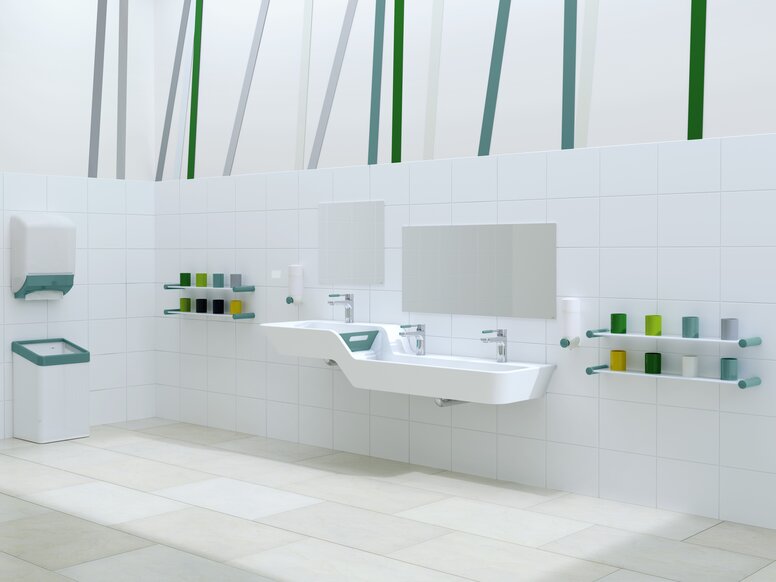HEWI MAG / SCHOOL & KINDERGARTEN
Designing cloakrooms in day care centers – the most important planning tips.
Functionality, safety, and aesthetics – the design of a cloakroom for day care centers plays an important role in meeting the needs of children and creating an organized environment.
A well-designed and attractive cloakroom not only makes everyday life in the day care center easier but also makes children feel comfortable and happy. In this article, you will get useful tips and creative ideas on how to design a functional and attractive cloakroom for your day care center.
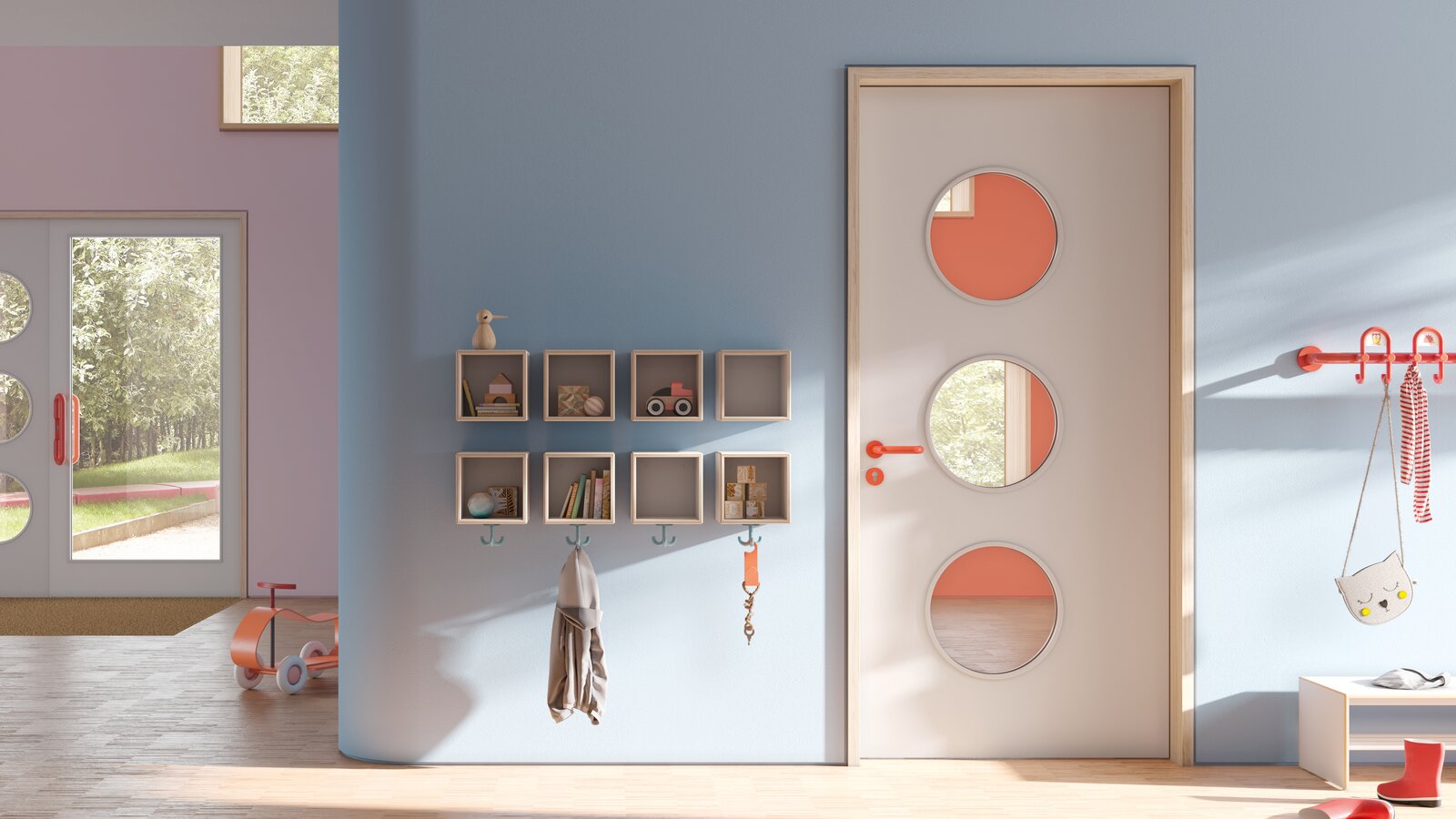
Take into account the needs of children
When designing a cloakroom for day care centers, it is important to take into account the needs of children. Think about how best to use the cloakroom in order to make it easier for children to access their personal belongings. A child-friendly height of the cloakroom rail hooks and sufficient storage space for backpacks, jackets, and shoes are crucial.
Give children the opportunity to store their personal belongings in the cloakroom. This can be a small compartment or box in which they can keep their favorite toys or special mementos. This creates a link between home and day care and gives the children a sense of security and familiarity.
DAY CARE CLOAKROOM: REQUIREMENTS AND REGULATIONS
Consider specific requirements and regulations when planning a day care cloakroom: Safety should always come first. Make sure that the cloakroom does not contain any element with sharp edges or protruding parts that children could injure themselves on. Regularly check the condition of the cloakroom, and immediately repair any damage. In addition, fire safety regulations and hygiene regulations must be observed.
What matters in the day care center cloakroom: Flexibility and adaptability
Children are continually growing and developing, and needs and requirements change over time. For example, use hooks or modular storage systems that can be expanded or reconfigured as needed.
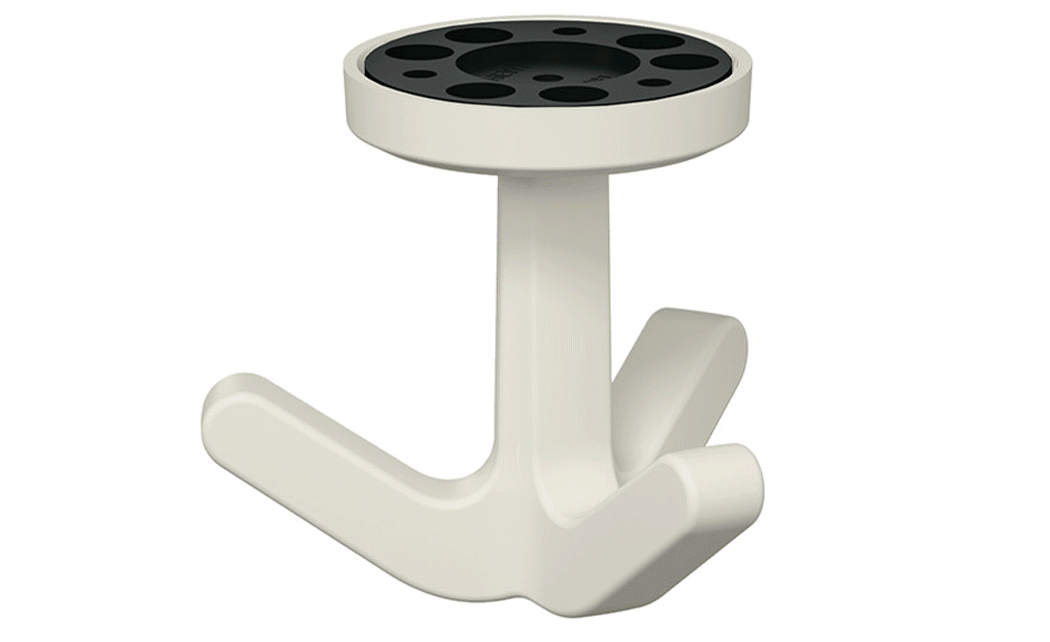
Height-adjustable elements
Children of different ages have different needs in terms of the accessibility of clothing and footwear. One way to adapt the day care center cloakroom to the different sizes of children is to use height-adjustable elements. Height-adjustable coat hooks, shoe racks, and storage compartments can be adapted to the individual height of the children. This allows children to be able to reach their jackets and shoes independently and promotes their independence.
Flexible room layout
The ability to flexibly divide the space in the day care cloakroom can be beneficial when it comes to meeting changing needs. By using partitions, curtains, or mobile shelves, you can adjust the space as needed. This flexibility makes it possible to enlarge or reduce the size of the cloakroom, For example, to create additional storage space or to optimize the use of space. When these are used as acoustic wall panels and sound absorbers, they also reduce the noise level in the room.
Color coding and labeling
A well-structured day care cloakroom makes it easier for children to find their own belongings. You can use color coding systems and labels for this purpose. Use clear labels or pictures in order to assign each child an individual space. Also use different sections or compartments in order to separate the different types of clothing and equipment. This promotes independence and allows the children to organize their things on their own. If required, the color coding systems and labels can be easily changed or updated.
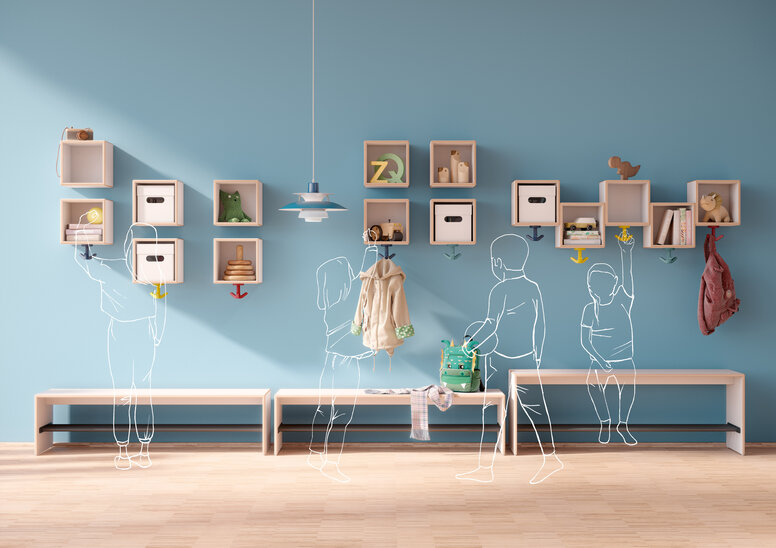
Designing cloakrooms in day care centers: Creative ideas
In order to make the cloakroom even more attractive, you can introduce creative elements. For example, use photo walls on which children can hang their own pictures, or create an interactive white board on which they can share their thoughts and ideas. This encourages creativity and gives children a way to express themselves.
Colorful color schemes
Use vibrant and cheerful colors in order to create a positive mood in the cloakroom. Colorful color schemes with different hues and contrasts can liven up the room and attract a child’s attention. Remember to choose colors that are kid-friendly and match the energy and creativity of children.
Kindergarten symbols in the cloakroom: Fun hanging options
Make hanging jackets and clothes in the day care cloakroom a fun experience by using fun hanging options. For example, use hooks in the form of animals, cartoon characters, or other child-friendly motifs. These special hooks make hanging clothes a fun act and help kids more easily identify their personal areas. The 16 possible HEWI colors provide colorful emphasis.
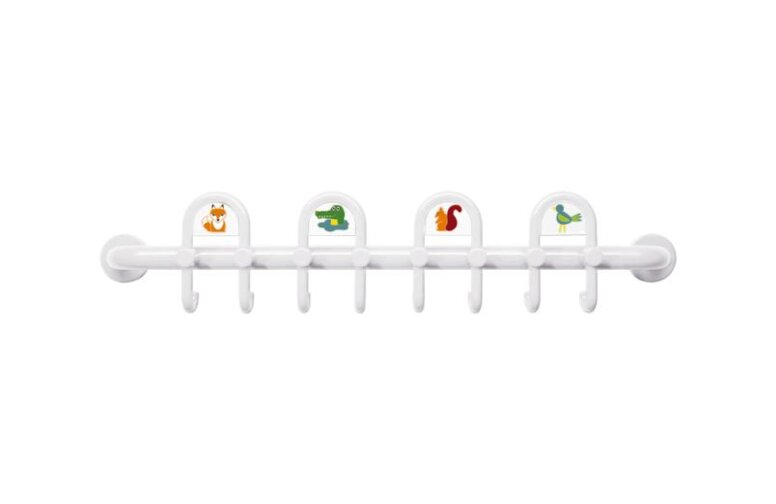
Other useful furnishings for the day care center cloakroom
Lever handle for colorful security
Also pay attention to door handles and handrails in order to achieve a consistent design. A large radius is easy for children’s hands to grip and minimizes the risk of injury. When painted in signal colors, they also stand out well against the background, are easy to recognize, and thus increase safety
Light and freedom of movement in the day care cloakroom
Good illumination
A well-lit cloakroom room area makes it easier for children to dress themselves independently. This makes it easier to handle zippers and to tie and undo shoe laces. Lighting colors that are warm and light creates a positive spatial effect and looks inviting and friendly. A mix of natural and artificial light sources also provides better orientation in the room.
Space for information exchange
The entrance area and the cloakroom also serve as a place for exchanging information in the kindergarten. Parents and guardians can talk about general topics or receive information about the day care center from the teachers. Many educators also use the area to display informational brochures or announce field trips. For example, it would be a good idea to plan a table with seating, where parents can exchange information and sign up to participate in various events.
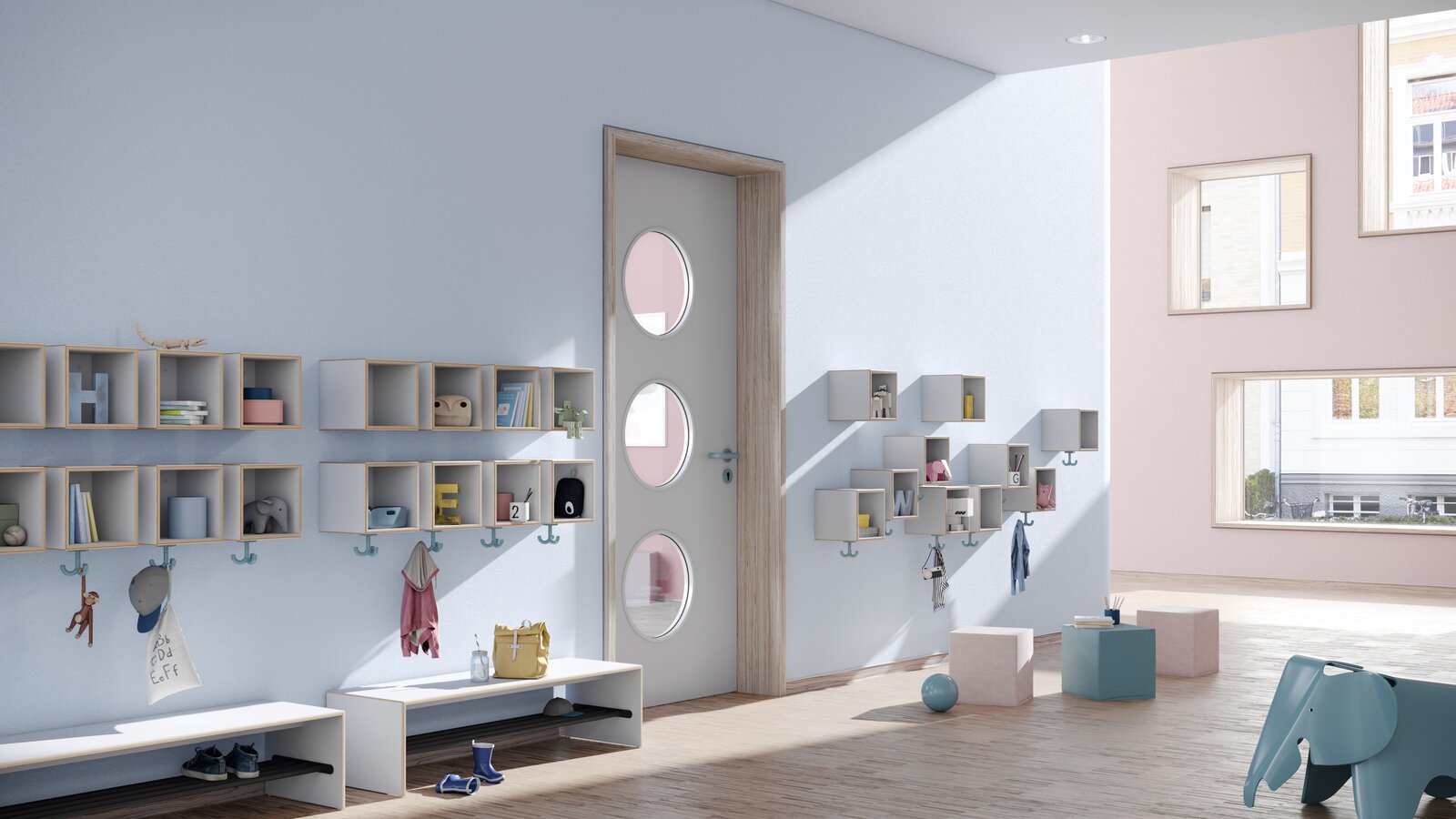
Designing cloakrooms in day care centers: Regularly evaluate and improve
Take time to periodically evaluate the effectiveness of the cloakroom and make possible improvements. Ask the day care staff to gather feedback from children and parents in order to find out whether the coat rack is serving its purpose and whether there is room for improvement. Through continuous improvements, you can ensure that the cloakroom always meets the current needs.
Newsletter
Would you like to learn more about our products for kindergartens and schools? Subscribe to our newsletter now. Our monthly newsletter will keep you up to date about exciting new products and other interesting news from HEWI.
